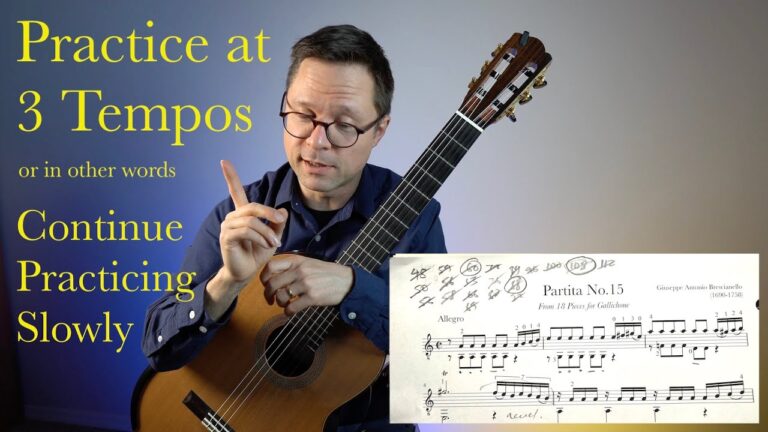Left Hand Tension and Vice Grip Problems: Relaxation and awareness exercises on classical guitar. Make sure you have a good posture, position, and left hand technique before working on these exercises (check out the links below). It’s also very important to play close to the frets in order to not buzz.
Video Times:
- 0:00 Intro and Discussion 1
- 1:28 Vice Grip and Thumb Relaxation
- 4:00 Muted and Buzz Exercises
- 8:01 Review and Right-Left Disassociation
- 9:54 Conclusion
Relavant Links
Subscribe to the free membership newsletter and if you’re just watching for free you can consider supporting the site. This video was performed on a Douglass Scott classical guitar with Aquila Cristallo strings and an ErgoPlay Troster guitar support. All my gear here.
Previous Video and Lesson
Lesson: Left Hand Tension and Relaxation Exercises – This is a lesson on how to relax the left hand and learn to do the movements without tension. Although some tension is used in playing we must differentiate between functional tension and dysfunctional tension (some terms from Charles Duncan’s The Art of Classical Guitar Playing). YouTube Lesson Link. In the video I cover 4 main topics:
- The importance of have a good technique and positions overall
- Muted exercises that can help your technique
- The vice-grip problem and thumb tension
- Integrating these exercises into your practice routine
Although I didn’t discuss it above, this is also related to speed work on guitar. My formula is: Speed = Economy of Motion + Accuracy + Relaxation – Economy of motion is the act of eliminating unneeded movements. Keeping your fingers close to the strings and preparing your fingers directly over the frets increases efficiency. Accuracy is self-explanatory but should not be overlooked. Placing your fingers close to the frets allows you to play with less pressure and tension. Relaxation enables you to access reflexes connected to your body’s natural ergonomic movements. Focus on slow, accurate playing and relaxation. Allow speed to come naturally as a result of good practice.
Here’s the video on Speed and Relaxation from my book Classical Guitar Technique: Essential Exercises, Scales, and Arpeggios. The 122 page book includes: Practice Routines, Tips, 100 Open String Exercises, 120 Giuliani Arpeggios, Scales, Slur Exercises, Shifts, Finger Independence, Barre, Tremolo, Common Harmonics, and much more.




